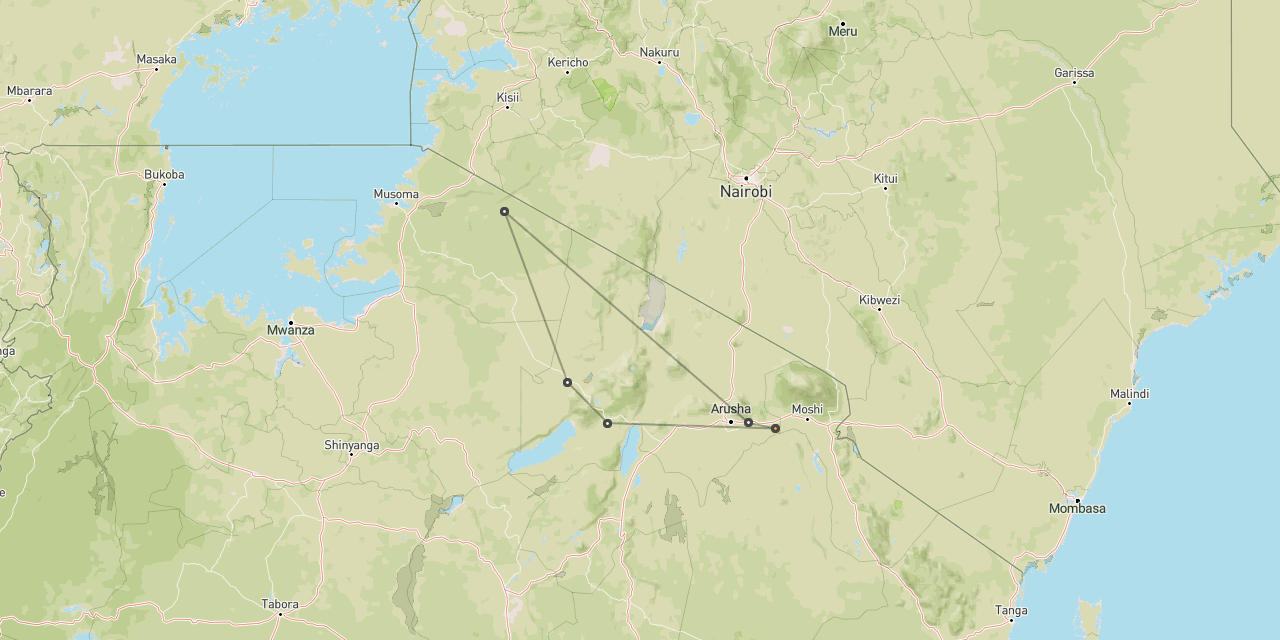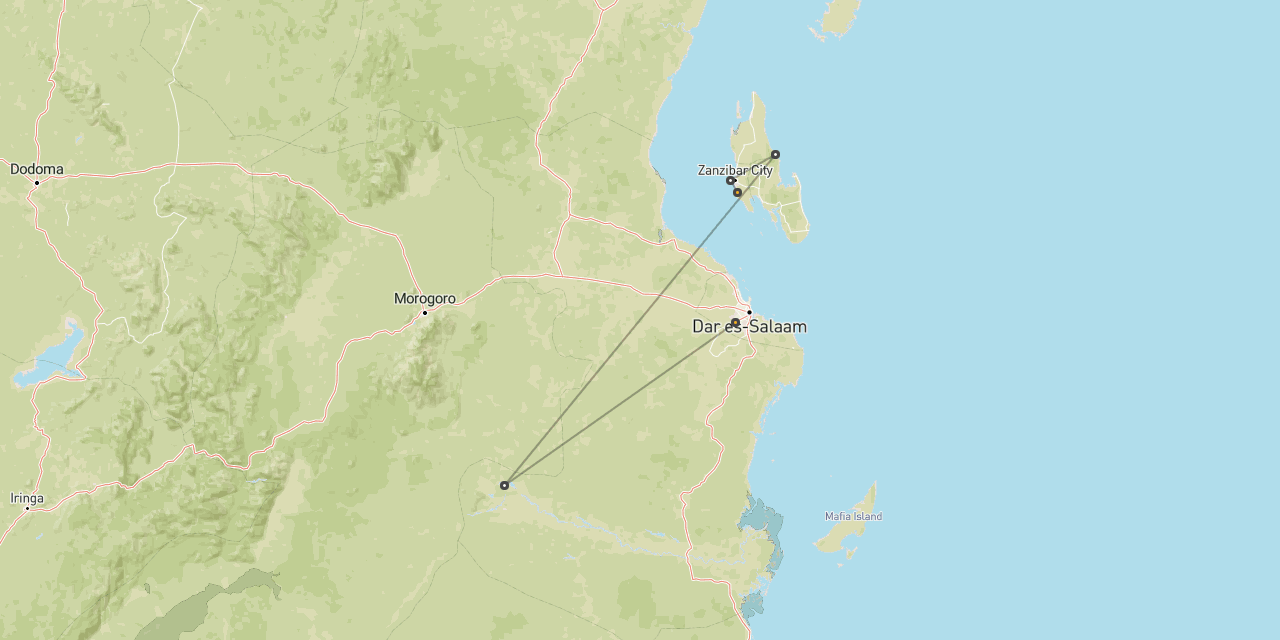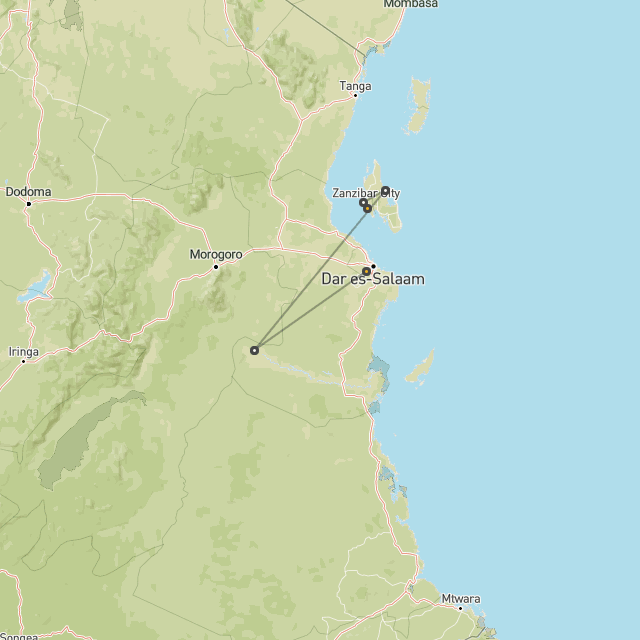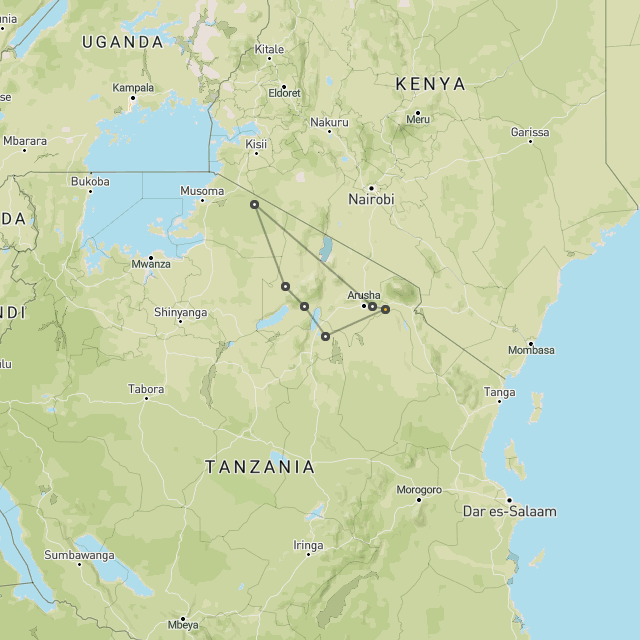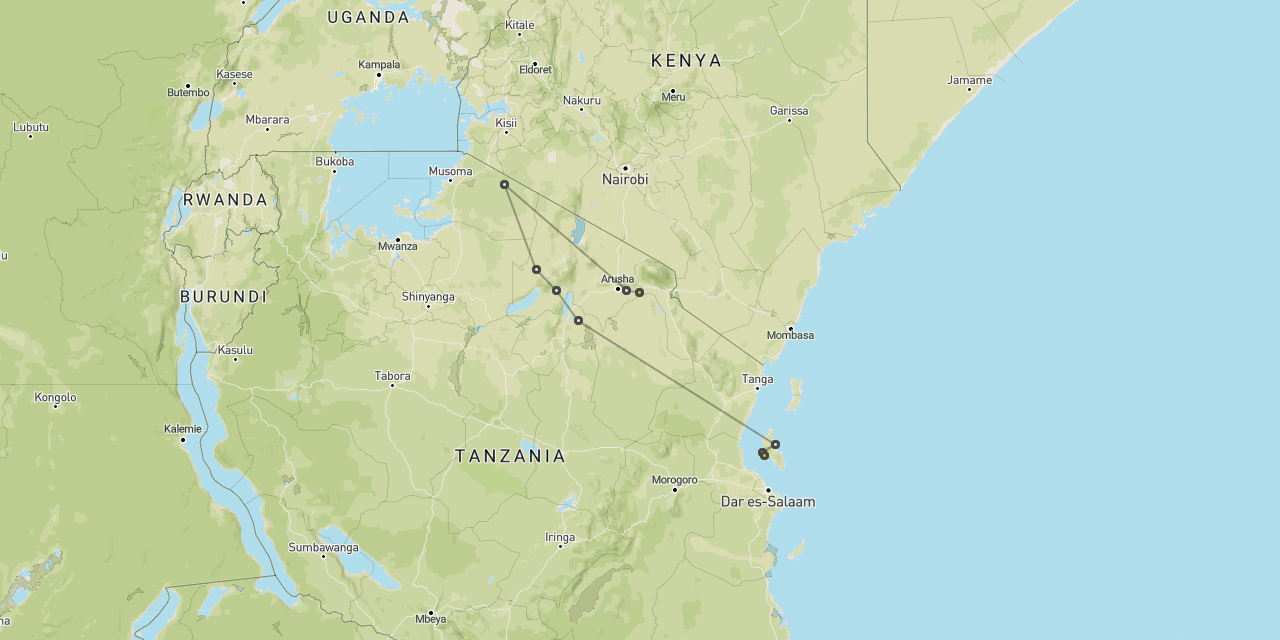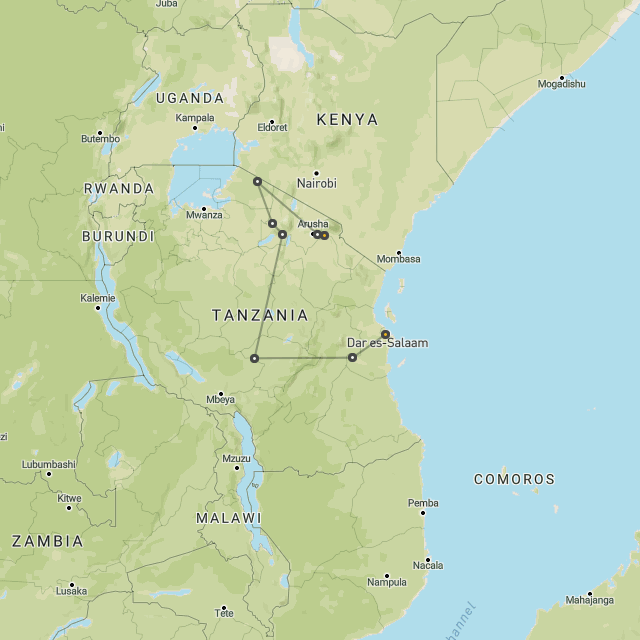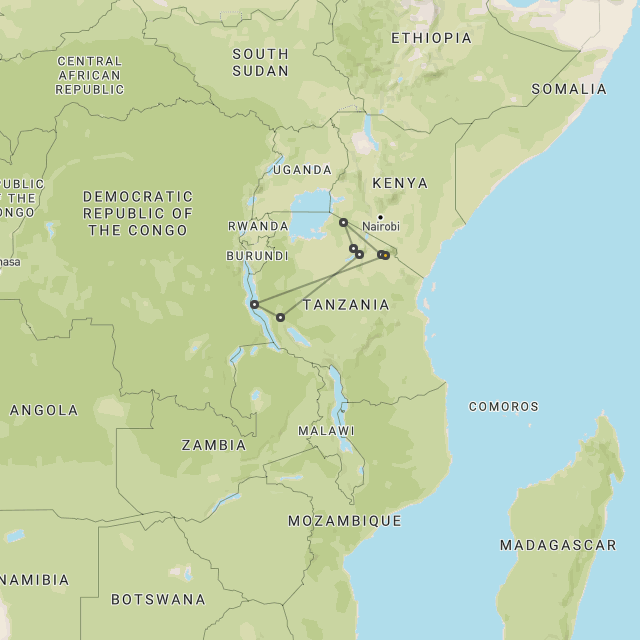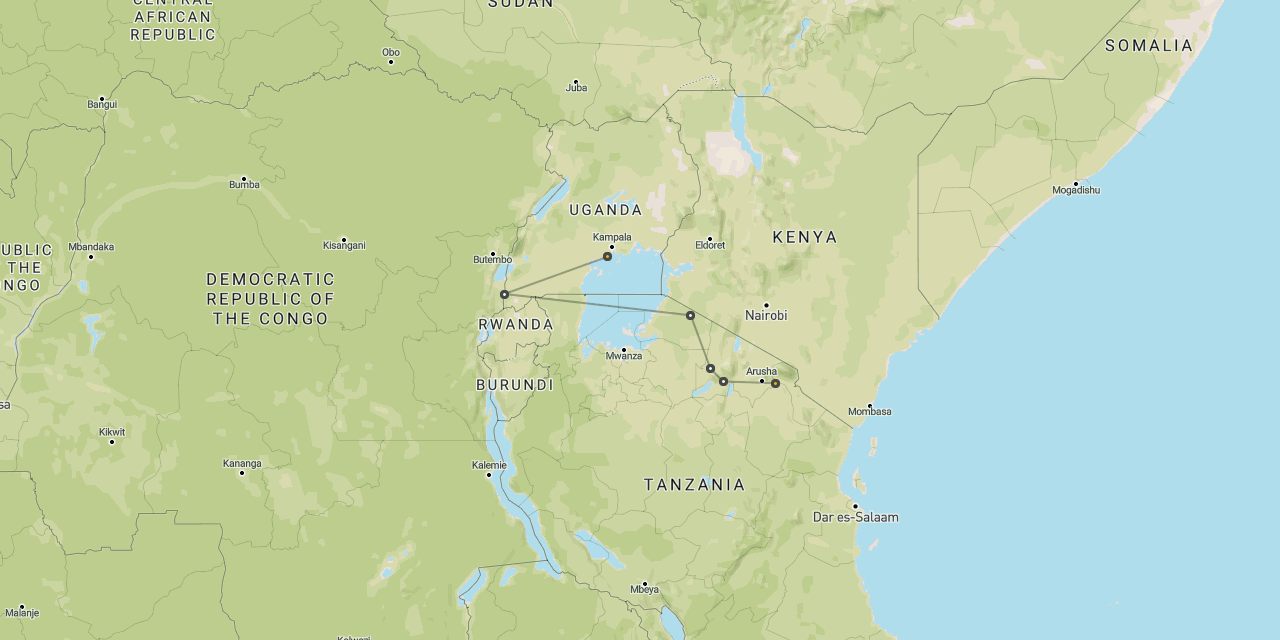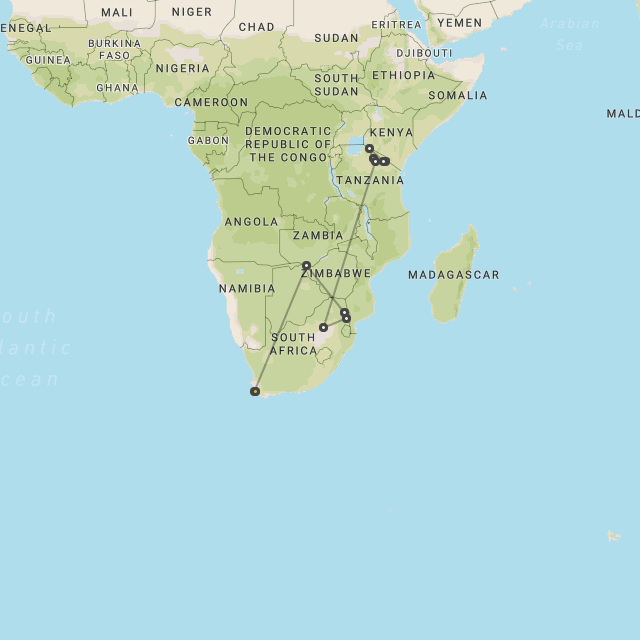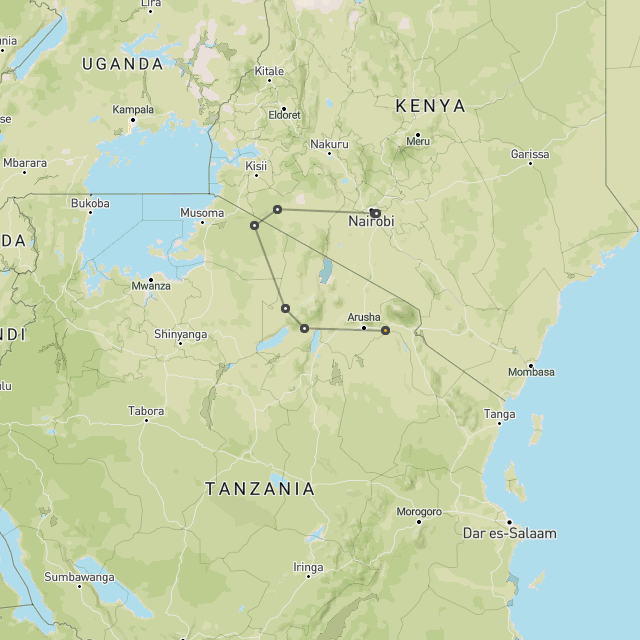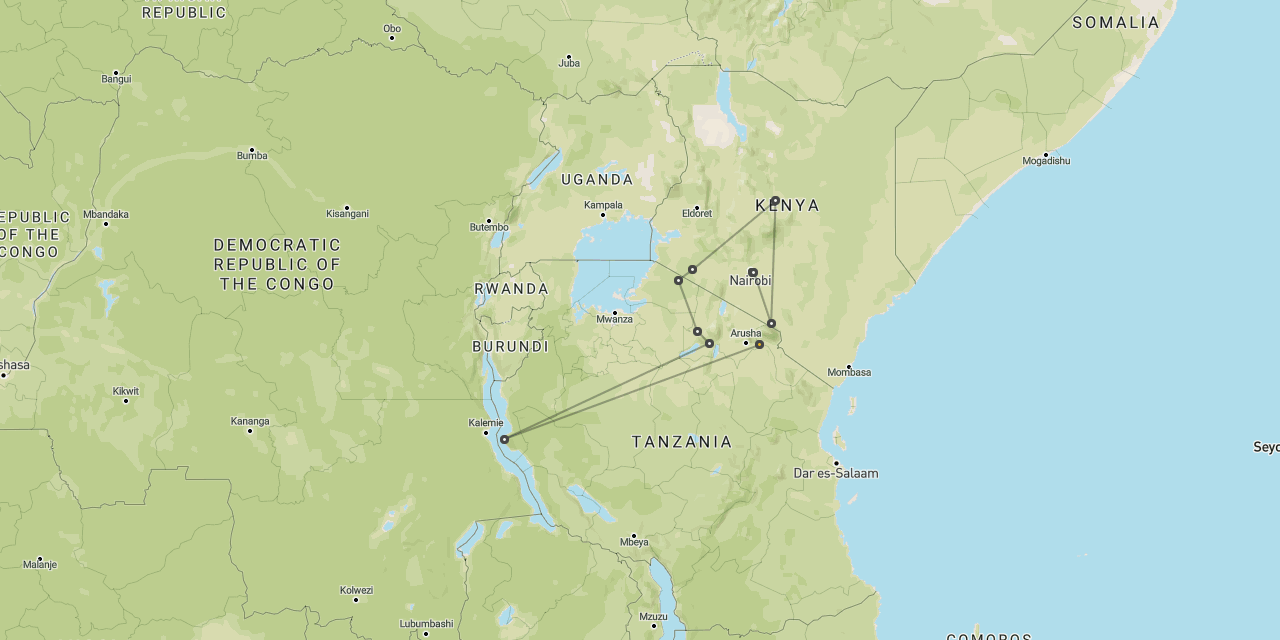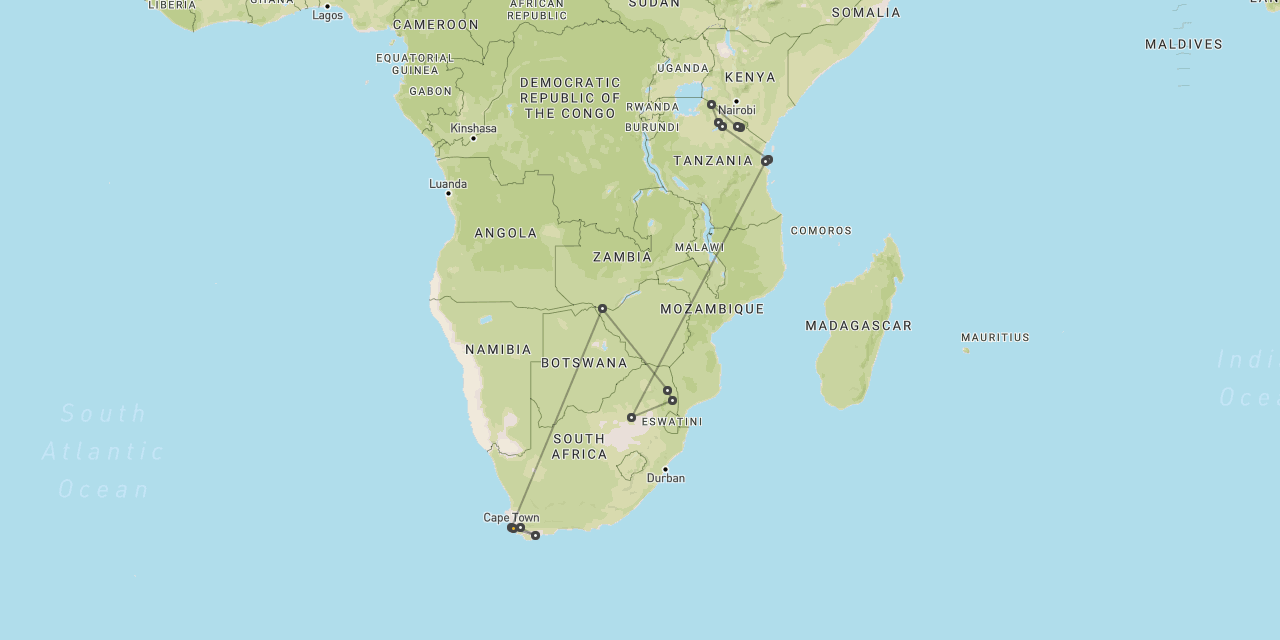
Safari to Serengeti Grumeti
Serengeti Grumeti
is a private safari area
adjoining the national park,

divided into two very different sectors
The Serengeti Grumeti area is divided into two very distinct areas, which contain contrasting levels of accommodation and which tend to fit into trips in very different ways …
Singita Grumeti Reserve
At 500 square kilometres, the Singita Grumeti Reserve is a substantial private safari area adjoining the Serengeti.
Limited to around sixty guests in a handful of small luxury camps, all of which are under the same ownership, this is an extremely high quality area with no crowds.
Being outside the Serengeti means that the guides here are not bound by park regulations and have a much greater freedom to operate a wide range of safari activities. Vehicle safaris can be operated by day and night, as well as being able to go off-road to make the most of important sightings.
The area offers very solid wildlife viewing year round, with a good range of resident animals, including all of the usual suspects except for rhinos.
The main Serengeti migration herds usually pass through May-Jun and Oct-Nov, with a portion of the main herds often remaining here during the intervening Jul-Sep dry season months.
Singita Grumeti Reserve is usually visited as part of a very high-end trip, often staying in just this one area, sometimes by in combination with other luxurious properties in other Serengeti areas and the Ngorongoro Crater
The vast majority of visitors to Singita Grumeti Reserve stay in just one property here, usually spending 3-5 nights in the area.
The Grumeti Sector
At around 450 square kilometres, the Grumeti Sector is a substantial wildlife area immediately to the north of Central Serengeti.
Previously reserved for hunting safari, the area was converted to photographic safari in 2012, since when the wildlife has started to become more numerous and more relaxed.
Vehicle traffic is much lower and regulations much less strict than inside the national park, making it possible for camps to do off-road driving, walking safari, bush meals and night vehicle safari.
The area offers decent wildlife viewing year round, with a good range of resident animals, including most of the usual suspects except for rhinos.
The main Serengeti migration usually passes through May-Jun and Oct-Nov, with a portion of the main herds often remaining here during the intervening Jul-Sep dry season months.
Wildebeest migration
This Serengeti Grumeti area tends to host the migration during the May-Jul period, when the herds are moving northwards.
The timing of the herds emerge from the Mbalageti Hills and spill out across the plains of the Western Corridor is quite unpredictable, but is usually during Apr-May. As the wildebeest graze their way north, they eventually cross the Grumeti Stream and enter these areas, usually some time in early May.
The main herds tend to turn east towards central areas and then cut north into the forest of the Northern Corridor, disappearing from this area during June, but with the stragglers still hanging around into July.
In recent years we have had reports that considerable herds to wildebeest are now choosing to remain here in Grumeti throughout the dry season, instead of heading all the way up to the Mara River. They only disappear southwards into Nov-Dec. But for now we are continuing to assume that this does not compare to the full migration experience up in Serengeti Mara at this time.
It might be worth pointing out that during the converse seasons, when the migration is resident in the north and south, there are major events taking place (river crossings and calving season respectively). But during the periods when the migration is passing through the Serengeti Grumeti area, there’s not quite so much going on. It’s still nice to see so many animals, but the sense of spectacle is certainly not so great.
Resident wildlife
The Serengeti Grumeti contains a good range of ecosystems and there is almost always water available year round in the Grumeti Stream.
In addition to the migration herds, the area therefore also hosts a reasonably strong range of resident wildlife, notably including good populations of impalas and giraffes, as well as good numbers of lions, cheetahs and spotted hyenas. Elephants are usually also around, plus plenty of hippos and crocodiles in the river.
Once the migration herds have disappeared, during Jul-Apr, the resident wildlife here is usually sufficient to provide some really high quality safari experiences.
Traffic avoidance
The Singita Grumeti Reserve is completely private, so there should be very few traffic issues here.
The Grumeti Sector is a bit more complicated, since there are several lodges from different safari companies in the area, plus a large village and a significant transit road. However we would not expect to encounter any really significant vehicle traffic here, certainly nothing to compare with the flows in the adjacent Serengeti Central area.
As always, it’s very much up to you to make it clear to your guide quite how important avoiding other vehicles is to you.

Gallery

Video
Map
The Singita Grumeti Reserve tends to feature in a very low proportion of trips, largely due to the tight migration window and very high prices. The usual stay duration is 3-5 nights.
The Grumeti Sector tends to feature mainly in good value safaris, in combination with Serengeti Central and Serengeti Mara, where guests are happy to skip the Ngorongoro Crater. The usual stay duration is 1-3 nights.
Seasonality
This Serengeti Grumeti area tends to be best for safari during the May-Jul migration season and the overlapping Jun-Oct dry season, which happily coincide with the main dry season, when weather conditions are at their best.
During the converse Nov-Apr season this Serengeti Grumeti area tends to be of less interest, but can serve a supporting role for safaris into the more southerly areas where the migration calving and rut events are taking place.
Getting there
The majority of people visiting the Singita Grumeti Reserve arrive by light aircraft and explore the area with a guide and camp from their chosen lodge.
The majority of people visiting the Grumeti Sector do so as part of a guided overland safari, so travel to their camp and around the area in their private vehicle.
Where to stay
In the Singita Grumeti Reserve the majority of people stay at one lodge in the area, usually for 3-5 nights.
The flagship property is the substantial Singita Sasakwa Lodge, backed up by two slightly smaller options, the luxury tented Singita Sabora Camp and the chic Singita Faru Faru Lodge.
Our favourites are the smaller options which are designed to exclusively host small private groups, the luxurious Singita Serengeti House and the more outdoorsy Singita Explore Camp.
In the Grumeti Sector the majority of people stay at one lodge, usually for 1-3 nights.
The stand-out option here is the relatively simple Grumeti Hills, which is literally a fraction of the price of the nearby Singita properties.
a real hotspot for migration herds May-Jul
Further reading
- Safari in Serengeti
- The best ways to experience the Serengeti migration
- The best balloon safari in Serengeti
- The best ways to avoid traffic in Serengeti
- The best time of year for safari in Serengeti
- The best locations for safari in Serengeti
- Safari in Serengeti Central
- Safari in Serengeti Mara
- Safari in Serengeti North
- Safari in Serengeti Southcentral
- Safari in Serengeti Southeast
- Safari in Serengeti Southwest
- Safari in Serengeti West
let us know your thoughts about Tanzania
and we will help you create the perfect safari

Extraordinary tailor-made adventures,
from earthy and edgy to easy and extravagant
From around USD 2500 per person, you set the ceiling
Sample Trips
Here are some of our popular trip shapes

Get started on your trip
It’s never too soon to get in touch, we are here to help with every stage of your planning.
Best Lodges
We regularly inspect and photograph all of the the best lodges, to ensure that we always recommend the most suitable options
Key Locations
Take a look around related locations. Click ‘View more’ to explore locations further afield.


















